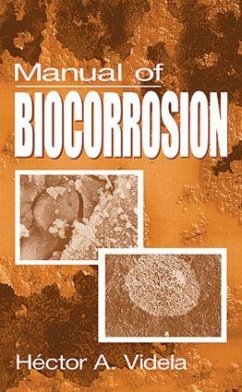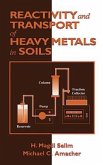The academic sector will benefit as well from the up-to-date information on mechanisms and recent advances in all biocorrosion aspects and technology. Research trends such as the application of surface analysis techniques and modern electron microscopy, the use of conventional and innovative electrochemical techniques for assessment, and microbial inhibition of corrosion are all considered.F eatureso100 illustrations provide you with a visual understanding of the problems and techniques discussedo30 tables give you quick access to datao46 suggested readings provide references on books, conference and workshop proceedings, and special issues of scientific journals and technical publications specifically devoted to biocorrosion and biofoulingo454 references offer a wide selection of up-to-date sources on specific subjectsoLaboratory methods and formulations provide practical information for research and field workoCombination of information from a number of specialized fields presents a comprehensive view of biocorrosionoChapters contain a "Key Features" section that summarizes conclusions and highlights key pointsoA glossary of terms presents easy-to-understand explanations of terms
The Manual of Biocorrosion explains the microbiology, electrochemistry, and surface phenomena involved in biocorrosion and biofouling processes. Written primarily for non-specialists, the information in this manual is practical and offers a comprehensive look at the three components of biocorrosion: the microorganisms, the metal, and the aqueous environment. It also addresses methods for the monitoring, prevention, and control of biocorrosion. The first part of the book covers the fundamental aspects of microbiology, electrochemistry, and biofouling of metal surfaces. The second half describes biocorrosion assessment in the laboratory and the field, the main control and mitigation procedures used, practical case studies, and laboratory methods and formulations.
The Manual of Biocorrosion is the book the industrial sector (water treatment plants, oil refineries, etc.) has been waiting for, providing the basics for implementing prevention, control, and mitigation procedures. In addition, it covers the latest industry trends with discussions of biocide selection, strategies for treating biocorrosion without harming the environment, and the latest monitoring programs. The academic sector will benefit as well from the up-to-date information on mechanisms and recent advances in all biocorrosion aspects and technology. Research trends such as the application of surface analysis techniques and modern electron microscopy, the use of conventional and innovative electrochemical techniques for assessment, and microbial inhibition of corrosion are all considered.
Features
100 illustrations provide you with a visual understanding of the problems and techniques discussed
30 tables give you quick access to data
46 suggested readings provide references on books, conference and workshop proceedings, and special issues of scientific journals and technical publications specifically devoted to biocorrosion and biofouling
454 references offer a wide selection of up-to-date sources on specific subjects
Laboratory methods and formulations provide practical information for research and field work
Combination of information from a number of specialized fields presents a comprehensive view of biocorrosion
Chapters contain a "Key Features" section that summarizes conclusions and highlights key points
A glossary of terms presents easy-to-understand explanations of terms used in biocorrosion for the non-specialist
The Manual of Biocorrosion explains the microbiology, electrochemistry, and surface phenomena involved in biocorrosion and biofouling processes. Written primarily for non-specialists, the information in this manual is practical and offers a comprehensive look at the three components of biocorrosion: the microorganisms, the metal, and the aqueous environment. It also addresses methods for the monitoring, prevention, and control of biocorrosion. The first part of the book covers the fundamental aspects of microbiology, electrochemistry, and biofouling of metal surfaces. The second half describes biocorrosion assessment in the laboratory and the field, the main control and mitigation procedures used, practical case studies, and laboratory methods and formulations.
The Manual of Biocorrosion is the book the industrial sector (water treatment plants, oil refineries, etc.) has been waiting for, providing the basics for implementing prevention, control, and mitigation procedures. In addition, it covers the latest industry trends with discussions of biocide selection, strategies for treating biocorrosion without harming the environment, and the latest monitoring programs. The academic sector will benefit as well from the up-to-date information on mechanisms and recent advances in all biocorrosion aspects and technology. Research trends such as the application of surface analysis techniques and modern electron microscopy, the use of conventional and innovative electrochemical techniques for assessment, and microbial inhibition of corrosion are all considered.
Features
100 illustrations provide you with a visual understanding of the problems and techniques discussed
30 tables give you quick access to data
46 suggested readings provide references on books, conference and workshop proceedings, and special issues of scientific journals and technical publications specifically devoted to biocorrosion and biofouling
454 references offer a wide selection of up-to-date sources on specific subjects
Laboratory methods and formulations provide practical information for research and field work
Combination of information from a number of specialized fields presents a comprehensive view of biocorrosion
Chapters contain a "Key Features" section that summarizes conclusions and highlights key points
A glossary of terms presents easy-to-understand explanations of terms used in biocorrosion for the non-specialist








